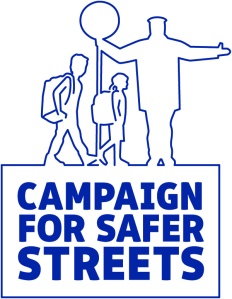Here at RoSPA, we want to see safer streets that encourage walking and cycling not only because it helps to prevent injuries, but also because it has a positive effect on a range of health-related issues, including heart disease, mental health and air pollution.
 Making these links between safer roads and wider health issues are crucial. They can have a big impact on families too. Imagine being able to make the journey to school by bike, scooter or on foot without fear of being knocked down by speeding traffic. How would your children feel? Energised, happy, healthy…the list is endless.
Making these links between safer roads and wider health issues are crucial. They can have a big impact on families too. Imagine being able to make the journey to school by bike, scooter or on foot without fear of being knocked down by speeding traffic. How would your children feel? Energised, happy, healthy…the list is endless.
Helping to make this vision a reality is Sustrans – which aims to help people choose healthier, cleaner and cheaper journeys and enjoy better, safer spaces to live in. This week, Sustrans is launching a new campaign for Safer Streets and needs your support. The campaign is calling for:
- 20mph default speed limits across built up areas – this will make everyone’s route safer
- Dedicated funding for active travel – this will provide the resources needed to transform routes and invest in walking and cycling locally
- Stronger duties and incentives on local authorities to develop routes and promote cycling and walking.
On the Sustrans website, you can find out more about getting support for making your street safer by creating a “DIY Street” – a tool to enable communities to take vital first steps to restore their streets for people and not cars.
Earlier this year, we unveiled new guidance for road safety and public health professionals to help boost the nation’s health. The report reveals that the greatest impact can be achieved when public health and road safety teams tackle shared agendas, such as working together to reduce the speed and volume of motor traffic or introducing road layouts that encourage safe walking and cycling.
And let us not underestimate the benefits of introducing 20mph speed limits in built up areas; lower speeds make crashes less likely and less severe when they do happen and are effective at protecting people, especially children, pedestrians and cyclists from being killed or injured. They also encourage more people to walk and cycle by providing a more pleasant and safer environment.
Councils are responsible for determining where 20mph limits should be introduced and they should take advantage of opportunities to implement them where they are needed. And this is where you come in! As part of the process, councils consult and engage with local communities and other stakeholders to make sure that safer roads are prioritised where needed and that residents have input into the schemes’ development. What are you waiting for? Get involved!
Duncan Vernon, RoSPA’s road safety manager